
Having a working computer makes home learning 10 times easier, and with more and more kids looking to learn through online teaching or educational videos, there’s never been a better time to pick up a laptop.
With that in mind, here are the best cheap laptops for kids along with all the information you need before you hit that all-important buy button.
And don’t forget, we’ve also got a breakdown of the best Chromebooks for kids, too.
Also of Interest: Best Phones for Kids
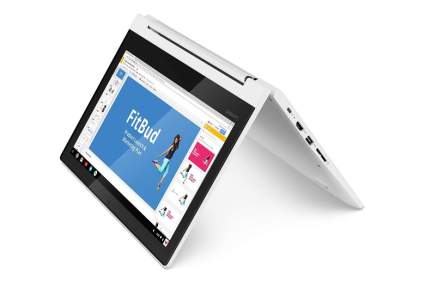
|
Amazon Customer Reviews
|
Price: $335.00 Shop at Amazon | Shop now Read our review |
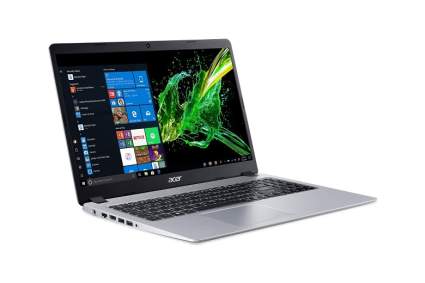
|
Amazon Customer Reviews
|
Price: $389.00 Shop at Amazon | Shop now Read our review |
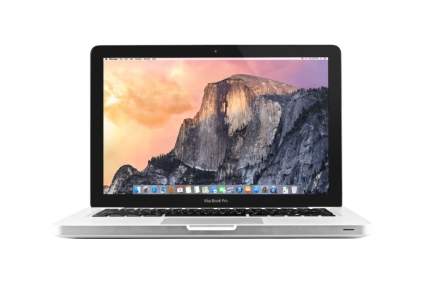
|
Amazon Customer Reviews
|
Price: $418.00 Shop at Amazon | Shop now Read our review |
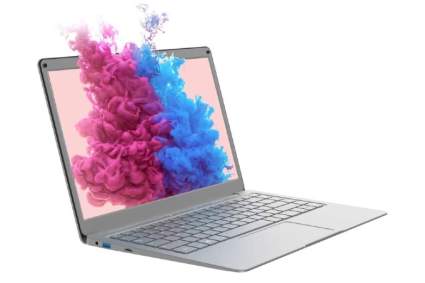
|
Amazon Customer Reviews
|
Price: $239.00 Shop at Amazon | Shop now Read our review |
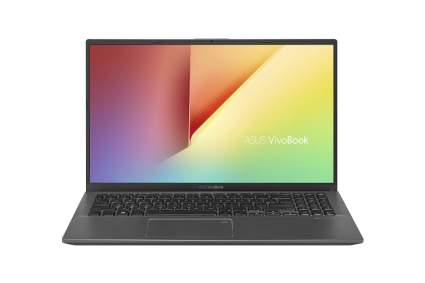
|
Amazon Customer Reviews
|
Price: $309.00 Shop at Amazon | Shop now Read our review |
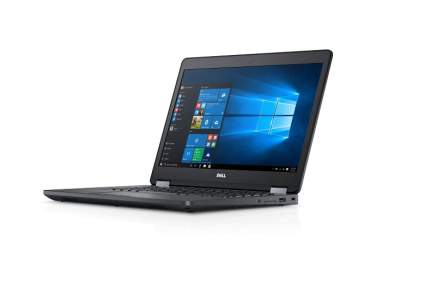
|
Amazon Customer Reviews
|
Price: $137.00 Shop at Amazon | Shop now Read our review |
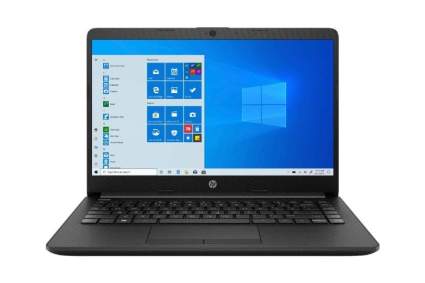
|
Amazon Customer Reviews
|
Price: $239.99 Shop at Amazon | Shop now Read our review |

|
Amazon Customer Reviews
|
Price: $286.25 Shop at Amazon | Shop now Read our review |
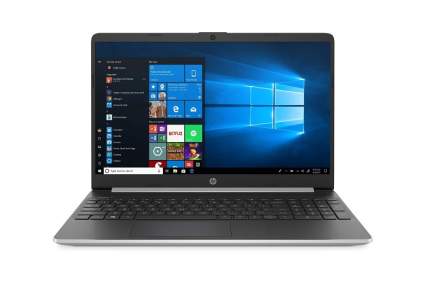
|
Amazon Customer Reviews
|
Price: $319.00 Shop at Amazon | Shop now Read our review |
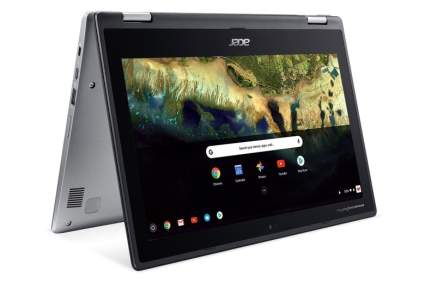
|
Amazon Customer Reviews
|
Price: $227.98 Shop at Amazon | Shop now Read our review |
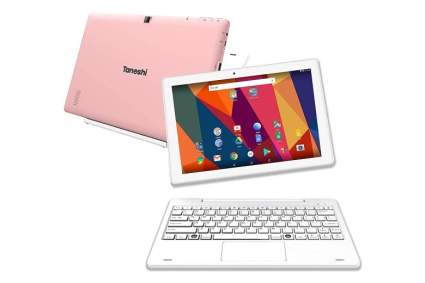
|
Amazon Customer Reviews
|
Price: $199.99 Shop at Amazon | Shop now Read our review |
-
1. Lenovo 2-in-1 Chromebook
Pros:- Great price
- Lots of power
- Great storage size
- 4GB of RAM is enough for schoolwork
Cons:- Not great for storing music on
- Or larger video games
- Not everyone will use the tablet mode (kids will, though)
The Lenovo 2-in-1 Chromebook packs in a hefty amount of power at an attractive price.
First off, let’s talk about the 2-in-1 feature. If it’s for schoolwork, the ability to turn this Chromebook into a tablet by flipping it over is going to come in useful. Be it watching educational YouTube videos or having it next to a writing book, a super-powered tablet is a lot easier to work with.
That’s the beauty of the 2-in-1 feature. You’re free to sit down and write and lay it face down next to your work. It’s the best of both worlds.
In terms of raw power the Lenovo 2-in-1 ticks all the boxes. 4GB of RAM is my personal minimum when it comes to Chromebooks. 2GB simply isn’t enough nowadays. Conversely, 64GB of eMMC storage is a solid amount. I work with 32GB of storage on my Chromebook (most of my non-essential data is saved to a memory card) and all the apps I need for work don’t even come close to filling it up.
It’s worth also noting, 10 hours is a lot in laptop terms. Should they need to work down the local Starbucks, that’s totally an option.
If you’re on the hunt for the best cheap laptops for kids, I cannot recommend the Lenovo 2-in-1 enough. It’s everything you need from a low-priced laptop.
RAM: 4GB | Storage: 64 GB eMMC | Display: 1366 x 768 | Screen Size: 11.6-inches | Weight: 2.64 pounds | Battery life: Up to 10 hours | Processor: MediaTek MT8173C
-
2. Acer Aspire 5 Slim Laptop
Pros:- Great specs
- Great video card
- Great Processor
- Super light
- Best for gaming or graphical work
Cons:- Costs a little more due to the extra power
- Power may be overkill if you only need it for writing, reading, or the Internet
- It plays Fortnite, so you'll never see your child again
The Acer Aspire 5 Slim Laptop is the one to go with if your child is looking to play video games or partake in graphics work.
To kick things off, let’s talk power. The 4GB of DDR4 RAM combined with the Ryzen 3 and the AMD Radeon Vega 3 mobile graphics card means gaming on this thing will run smoothly. Don’t expect to be able to run games on the highest settings, but for gaming on the go, on low to mid, you’ll be more than fine.
And yes, it’ll run Fortnite. I get that question a lot.
What’s great here is you can pick and choose your power level. Maybe you want to switch out the Ryzen 3 for the Ryzen 5 or 7 to speed the system up. The choice, and some control over the cost, is completely up to you.
If it’s pure power you’re after, you really won’t go wrong with this high-powered, and surprisingly light laptop.
RAM: 4GB | Storage: 128GB SSD | Display: 1920 x 1080 | Screen Size: 15.6-inches | Weight: 3.97 pounds | Battery life: Up to 7.5 hours | Processor: AMD Ryzen 3 3200U
-
3. Apple MacBook Pro (Renewed)
Pros:- Macs are more reliable than Windows PCs
- 4GB is just enough RAM
- Good processor
- Decent hard-drive space
- Solid battery life
- Great price because it's renewed
Cons:- The 8GB of RAM version is more tempting than the 4GB
- Doesn't have Windows
- It's renewed
Renewed is a great way to get great tech at a much lower cost.
This Renewed Apple MacBook Pro has a lot going for it. It’s an older model, but it still packs one hell of a punch.
The Intel Core i5 is a solid entry point, while this model’s 4GB of RAM is just about enough to make this laptop sing. There is a version with 8GB of RAM, by the way, but given we’re counting down the best cheap laptops for kids, I chose to go with the more affordable version.
Because this is an Apple product, there’s no sign of Windows anywhere. It will take some time to adjust, and compatibility across the board varies, but generally, Macs are more reliable than Windows PCs.
It’s worth keeping in mind as this is a renewed laptop, it comes with Amazon’s minimum 90-day supplier-backed warranty should you run into any issues.
Oh, and it’s also worth noting that renewed prices vary wildly, so if this is the one for you, be sure to snap it up before the price goes back up.
RAM: 4GB | Storage: 500GB HDDD | Display: 1280 x 800 | Screen Size: 13.3-inches | Weight: 4.54 pounds | Battery life: Up to 7 Hours | Processor: Intel Core i5
-
4. Jumper EZbook X3
Pros:- Decent amount of power for the price
- Works surprisingly well
- Slightly larger screen
- Super lightweight
Cons:- If you want to store music, you'll need a memory card
- Not suitable for gaming
- Battery life is good, but not as long as some of the others on here
The Jumper EZbook X3 is a Windows 10 laptop with the form factor of a Chromebook.
While this isn’t a laptop designed for gaming or artwork, for writing, working, and general online browsing, this smaller laptop will do all that with ease.
On the power side of things, 6GB of RAM upsets me. Not because it’s bad, it’s just laptops normally go from 4GB to 8GB. 6GB just feels wrong, though it is enough to get the job done.
Normally I’d be a little bit concerned about running Windows on a device with a storage capacity of 64GB, but somehow – maybe witchcraft? – it works without any major problems. It’s a clever bit of engineering in that respect. It shouldn’t work but does. Incredible.
If you’re after an affordable solution for schoolwork, the Jumper EZbook is easily one of the best cheap laptops for kids around.
RAM: 6GB | Storage: 64GB eMMC | Display: 1920 x 1080 | Screen Size: 13.3-inches | Weight: 2.7 pounds | Battery life: 6 hours | Processor: Intel N3350
-
5. ASUS VivoBook 15
Pros:- Great RAM and SSD options
- Larger screen size
- It's a Windows 10 laptop
- Backlit keyboard
Cons:- Processor isn't ideal (but will do)
- Battery life isn't as good as others
- It's a Windows 10 S laptop...
If it’s power you’re after, the ASUS VivoBook 15 is the way to go.
8GB of RAM backed by the 128GB means this Windows laptop is going to run fast. That said, it is slightly hindered by the Intel i3 processor, which is a cost-effective processor that lacks the power of the more expensive cores.
If it’s browsing, writing, reading, though, there’s more than enough power here to do all that and more.
You’ve also got a crisp display on the larger-than-most 15.6-inch screen.
RAM: 8GB | Storage: 128GB SSD | Display: 1920 x 1080 | Screen Size: 15.6-inches | Weight: 3.75 pounds | Battery life: Not Stated (around 7.5 hours)| Processor: Intel i3
-
6. Dell Latitude E5470 (Renewed)
Pros:- Great RAM and processor
- Larger than usual screen
- Great price
Cons:- Isn't ideal for gaming
- Is renewed
- Mouse pad could be better
The Renewed Dell Latitude E5470 packs a lot of power.
8GB of RAM is exactly what you want. Combine that with the Intel i5 processor and a spacious 256GB SSD and this thing is going to run like a dream.
The Intel HD 520 graphics mean this laptop isn’t going to be a powerhouse in the gaming department, but lower-powered games should run without too much trouble.
As always, if you’re after something for schoolwork, gaming is only a luxury add-on, so it’s hard to really hold the lack of gaming against it. This is a laptop designed for speed and ease when you’re working.
You’ve also got a killer 14-inch screen, which is way above the usual 11-inch option.
Just to drive this point home, this is a renewed laptop, meaning it’s been owned, returned, and fixed up by Amazon. Not everyone will be okay with that, but if you’re looking to get high-power specs for a low price, this is certainly the way to go.
RAM: 8GB | Storage: 256GB SSD | Display: 1366 x 768 | Screen Size: 14-inches | Weight: 3.9 pounds | Battery life: 5 hours | Processor: Intel i5
-
7. HP Business Laptop
Pros:- Great price
- Massive screen
- Decent SSD size
- Doesn't feature touchscreen tech
Cons:- 4GB is the absolute minimum for Windows PCs
- Processor could be faster
- Not good for graphical work or gaming
It’s amazing how if you ditch touchscreen tech suddenly something becomes much more desirable.
The HP Business Laptop isn’t designed for gaming or graphic work. It is, however, perfectly fine when it comes to reading, writing, or browsing the Internet.
4GB of RAM isn’t ideal when it comes to Windows 10 laptops. 8GB is the sweet spot, but 4GB is just about enough. You do, however, have a decent processor for the price backed by a meaty 128GB SSD – the latter of which is sure to speed up boot times.
You’ve also got an extra-large 14-inch screen when compared with the 11.6-inchers on this list.
Sure, this laptop isn’t going to win any awards any time soon, but it all comes down to what you need it for. If it is literally just writing, reading, and browsing, there’s nothing wrong with saving some money and going with something more affordable.
RAM: 4GB | Storage: 128GB SSD | Display: 1366 x 768 | Screen Size: 14-inches | Weight: 4.41 pounds | Battery life: Not Stated | Processor: AMD Athlon Silver 3050U
-
8. HP Chromebook X360
Pros:- 12 hour battery life
- Good amount of power under the hood
- Good eMMC size
Cons:- Not everyone needs the tablet function
- Not the clearest screen
- Colors don't pop as well as other Chromebooks
The HP Chromebook X360 is another solid option for those looking for both a tablet and a laptop.
As with the Lenovo 2-in-1, this laptop also turns from a tablet to laptop by turning the lid all the way back.
The advantage being, for writing work you’re free to use it as a laptop. But when you’re writing on paper and need to watch a video or read questions, you can have it in tablet mode right next to you.
While the stats on this thing are good, what’s really great about this laptop is the crazy-large 12 hours of battery life. You won’t need to be tethered to a power cord while you’re cramming for a test.
RAM: 4GB | Storage: 32GB eMMC | Display: 1366 x 768 | Screen Size: 14-inches | Weight: 4.74 pounds | Battery life: 12 hours | Processor: Intel Celeron N4000
-
9. HP Touchscreen Laptop
Pros:- Solid amount of RAM
- Decent SSD size
- Touchscreen
Cons:- Processor isn't ideal
- Touchscreen can slow the system down
- Better alternatives out there
If you’re after a Windows 10 laptop for schoolwork, this HP Touchscreen Laptop is well worth considering.
One thing I need to stress, whenever something boasts a touchscreen, that means it isn’t going to be as fast as a laptop that doesn’t feature touchscreen technology. That’s not a deal-breaker of course, but if it’s speed you’re looking for, this one won’t be as fast as others.
All that said, the 128GB SSD is going to speed up general tasks like booting up or opening programs.
On the power side of things, 8GB is more than enough, but again, I have concerns about the i3 processor.
This laptop simply isn’t designed for speed. For general browsing or writing, sure, you can do that. But then that begs the question why pick this model over, say, a Chromebook or another laptop on this guide?
Windows is a huge selling point, but I’d be remiss to recommend this over the other far better solutions out there.
RAM: 8GB | Storage: 128GB SSD | Display: 1366 x 768 | Screen Size: 11.6-inches | Weight: 4.4 pounds | Battery life: Not Stated | Processor: Intel i3
-
10. Acer Chromebook Spin 11
Pros:- It's a tablet and a laptop
- Good RAM and storage space
- Affordable, given it's a 2-in-1
Cons:- Battery life only lasts around 7.5 hours
- Older model (but cheaper because of that)
- The Acer logo placement is rubbish in tablet mode
The Acer Chromebook Spin 11 may be a few years old now, but if you’re we’re talking about the best cheap laptops for kids, there’s nothing wrong with saving yourself a small fortune and grabbing something that isn’t cutting-edge.
In TechRadar’s review, the site notes the battery life isn’t great, clocking in at around 7.5 hours. That isn’t a deal-breaker by any means as most use their Chromebooks plugged into an outlet, and that’s enough time to run to the local coffee shop, do some work, then have enough juice left when you get home. It’s just, by today’s standards, that’s not a massive amount of up time.
Where the Acer Chromebook Spin 11 comes to life is in the pricing. To get a tablet-laptop-hybrid at this price-point is a bargain (the Spin 15 comes in at an extra 200 bucks, by the way). And it still manages to hit the sweet spots in terms of RAM, storage, and the processor.
RAM: 4GB | Storage: 32GB eMMC | Display: 1366 x 768 | Screen Size: 11.6-inches | Weight: 2.76 pounds | Battery life: Not Stated | Processor: Intel Celeron N3350
-
11. Tanoshi 2-in-1 Android Computer
Pros:- Killer price
- A decent alternative to a traditional laptop for kids
- Can be used as a laptop or a tablet
Cons:- Lacks power
- Your child needs to be responsible with it
- Not ideal for teens
If you’re after a super budget option, here’s the Tanoshi 2-in-1 Android Computer.
So, let’s talk about this strange concoction. It’s a tablet that connects to a keyboard. The logic here is kids have it as a laptop for writing, learning to code – you know, basic school tasks like that. But when they want to watch videos, or when they need the laptop flat next to a piece of writing paper, they can disconnect the keyboard.
I’m thinking something like this would be perfect for those in the 10 to 11 age bracket. They’re old enough not to break it, but not quite old enough to need a real laptop.
Also, because of the age recommendation, it’s worth keeping in mind Android has some really great parental control options, meaning you’re free to control their access online.
Okay, in terms of power, this ain’t it. But under specific circumstances, and for a specific demographic, the Tanashi fits the bill.
RAM: 2GB | Storage: 32GB | Display: 1280 x 800 | Screen Size: 10.1-inches | Weight: 2.45 pounds | Battery life: 6 hours | Processor: Mediatek
How We Picked These Laptops for Kids
"Cheap" means different things to different people. For the purpose of this post we've selected laptops for around the $500 or less mark while also taking into consideration value and certain hacks.
For example, the Apple Macbook would fall way outside of our price range, but by looking at renewed options, suddenly the Macbook becomes more tempting.
In a similar vein, we also take a look at different models. Can we reduce the cost by, say, choosing an older model with similar specs? Absolutely.
With that out the way, below you'll find answers to the most common questions our readers have.
Chromebooks vs Windows Laptops - Everything You Need to Know
Without unloading a load of tech jargon on you, the simplest way to look at this is Android versus Windows.
Have you got a mobile phone or tablet that runs Android? A Chromebook is basically that but in laptop form with an added SSD to make sure everything runs a lot faster (my Chromebook takes around five to seven seconds to boot!).
Over in the Microsoft camp, Windows are what the vast majority of people use when they turn on a PC. If you're familiar with that ecosystem and really don't want to change, go with a Windows laptop over a Chromebook.
The other thing to consider is Chromebooks are, generally, less expensive than Windows laptops, making them a stellar option for kids, teens, and even classrooms.
It's also worth keeping in mind kids adapt to different operating systems a lot easier than adults. So while you may not want to make the jump to Android, it may be worth considering for them.
What Kind of Power Does a Child Need?
If we're talking specs (specifications), then it's important to consider what it's going to be used for.
If they're a teen looking to use the laptop in combination with a graphics tablet, you're going to want something with a powerful graphics card so they can run Photoshop (which is going to cost more).
If, however, you're after something for writing, math, learning, then specs aren't as important. So long as you've got enough power so the laptop runs smoothly, you're good.
What kind of specs should we be considering as a base guide? For Chromebooks, I work with 4GB of RAM with a 32GB eMMC internal storage drive and that's more than enough for my day job or when the kids hop on for schoolwork.
For Windows laptops, I'd recommend going with 4GB of RAM, a minimum of 32GB eMMC or SSD storage, and ideally an Intel i5 processor.
Of course, anything with tech isn't as simple as the above. Some laptops come with an Intel i3 processor and outperform those with more power. PCs are fun like that...
The best advice I have for you is to read what we've got to say, check the reviews for the product (with a pinch of salt, of course), and think about what it's going to be used for. Follows these rules and you'll come away with something they're going to get a lot of usage out of.
SSD vs eMMC vs HDD - What's the Difference?
Okay. Let's quickly jump into a rough breakdown (again, we leave the tech jargon at the door).
HDD - this is a basic hard-drive most PCs and laptops use due to how cost-effective they are and their superior size capacity.
SSD - this is shorthand for solid-state drive. While these cost more and come in at a lower capacity than HDDs, the way the process data means anything installed on them runs much, much faster.
eMMC - In short, this is an affordable SSD that isn't quite as fast. You'll find these types of storage in smartphones, tablets, and of course, a lot of Chromebooks.
Which is the best? That all depends. SSDs are the best for speed, eMMC for speed and cost, and HDDs for capacity.
For Chromebooks, you want eMMC or and SSD because speed is key. Just keep in mind you'll need to grab a memory card to store files like music or games on because the smaller storage size will get filled quickly if you don't.
For Windows laptops, I'd have to go with an SSD. For gaming, you want an SSD and an HDD, but for schoolwork, an SSD is more than enough.
What Is Windows 10 in S Mode?
Strap in because this is important. Windows 10 Home and Windows 10 Pro are different from Windows 10 S. Fun, I know.
All you need to know is S Mode is designed for laptops. It'll boot everything faster than a regular Windows 10 laptop but there are some caveats.
Firstly, you'll only be able to download apps from the Microsoft Store. This adds security but also limits what you can install.
The other upsides to S Mode include longer battery life, and the system will stay in tip-top condition for longer.
While this mode isn't the best for adults, when it comes to kids or teens, the extra layer of security is well worth considering. Especially seeing as you can switch out of it at a later date when they're older.
See Also: